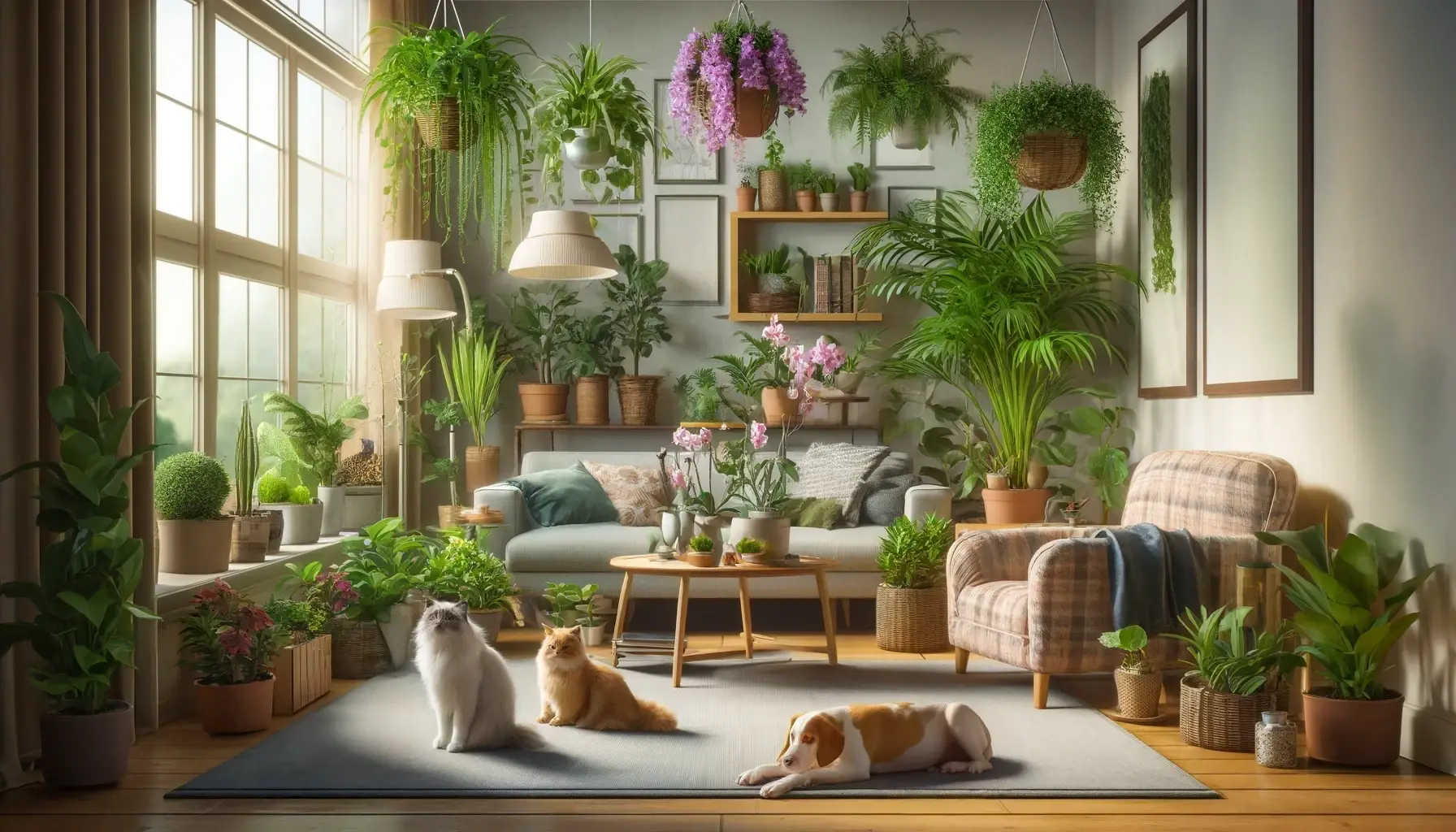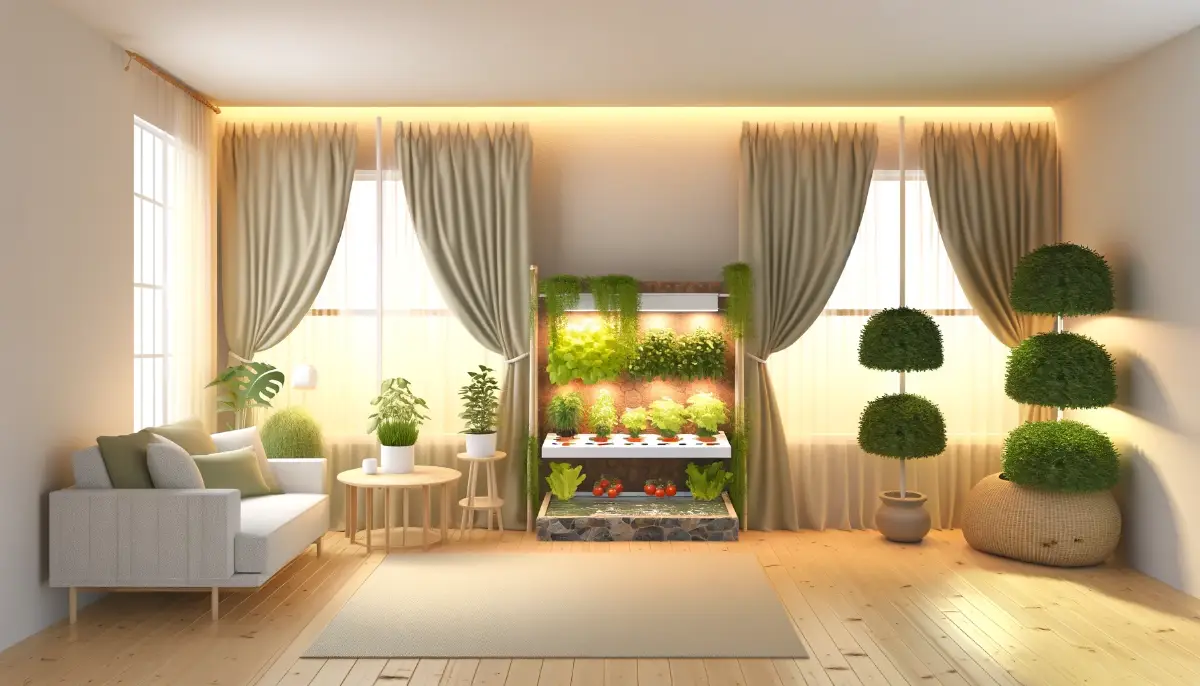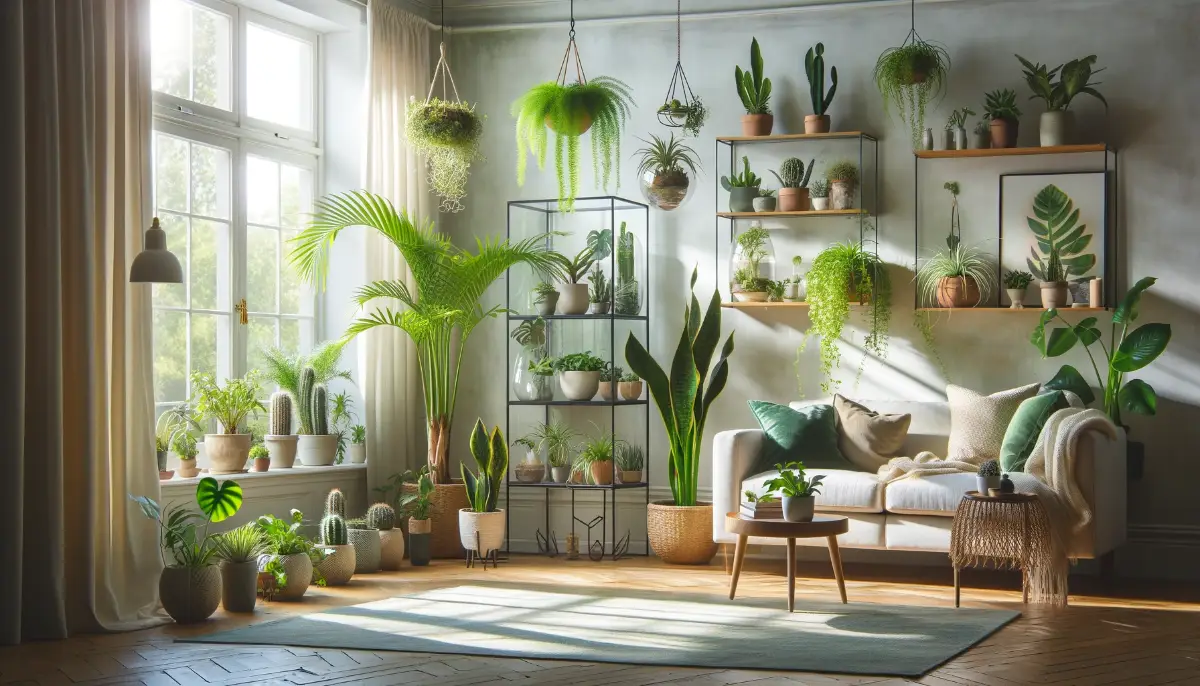If you’re a pet owner who loves to fill your home with lush greenery, choosing the right houseplants is crucial for keeping your furry friends safe and healthy.
While plants can enhance your living space and improve air quality, not all are safe for cats and dogs.
Some plants are toxic and can cause serious health issues if ingested by your pets. Fortunately, there are plenty of beautiful and safe options that allow you to enjoy the best of both worlds.
Popular Houseplants Safe for Cats and Dogs
Houseplants not only beautify your home but can also improve air quality. However, for pet owners, ensuring these plants are non-toxic to cats and dogs is essential. Here are some popular pet-safe houseplants, along with their descriptions and care tips:
Spider Plant (Chlorophytum comosum)
- Description: Spider plants have long, variegated leaves and can thrive in a variety of conditions. They are known for being particularly hardy and are excellent at purifying indoor air.
- Care Tips: Keep in indirect sunlight and water moderately. Spider plants also enjoy cooler temperatures and can be very forgiving of occasional over-watering.
- Why It’s Safe: Non-toxic to both cats and dogs, these plants can even tolerate a bit of nibbling without harm.
African Violet (Saintpaulia)
- Description: With their soft, fuzzy leaves and vibrant flowers, African violets can add a splash of color to any room. They are small and perfect for window sills or desktops.
- Care Tips: Provide moderate to bright indirect light and keep the soil consistently moist. Use lukewarm water and avoid getting water on the leaves to prevent spotting.
- Why It’s Safe: African violets are non-toxic to cats and dogs, making them a safe choice for pet-friendly households.
Boston Fern (Nephrolepis exaltata)
- Description: Known for its lush, feather-like fronds, the Boston fern is a classic choice that works well in hanging baskets or as a tabletop plant.
- Care Tips: Thrives in high humidity and indirect light. Keep the soil consistently moist and provide a cooler environment.
- Why It’s Safe: Boston ferns are safe for pets and are known to be one of the best air purifying plants available.
Phalaenopsis Orchids
- Description: These elegant orchids are widely appreciated for their long-lasting blooms and are available in a variety of colors.
- Care Tips: Phalaenopsis orchids prefer indirect light and high humidity. Water them weekly, but let the soil dry out between waterings.
- Why It’s Safe: They are non-toxic to both cats and dogs, making them an ideal choice for a sophisticated touch in a pet-safe home.
Bamboo Palm (Chamaedorea seifrizii)
- Description: Known for its lush, tropical appearance, Bamboo Palm adds a refreshing green touch to any room. It can grow quite tall, making it a striking feature in home decor.
- Care Tips: Prefers bright, indirect light but can tolerate some shade. Water when the top inch of soil feels dry, and keep the plant in well-draining soil to prevent root rot.
- Why It’s Safe: This palm is non-toxic to both cats and dogs, providing peace of mind for pet owners.
Prayer Plant (Maranta leuconeura)
- Description: Famous for its unique leaf patterns and movements—its leaves fold together at night, resembling hands in prayer.
- Care Tips: Thrives in low to medium light and high humidity. Keep the soil consistently moist, and consider using a pebble tray for added humidity.
- Why It’s Safe: Prayer plants are safe for cats and dogs, making them a worry-free choice for a dynamic and engaging indoor plant.
Lipstick Plant (Aeschynanthus radicans)
- Description: Named for its bright, tube-like flowers that resemble a tube of lipstick, this plant is perfect for adding a pop of color.
- Care Tips: Best in high humidity and bright, indirect light. Allow the top of the soil to dry out slightly between waterings.
- Why It’s Safe: It’s completely safe for pets and can be a charming addition to areas where pets roam freely.
Bromeliads (Bromeliaceae family)
- Description: Bromeliads come in a variety of stunning colors and shapes, with the most common feature being a brightly colored flower spike.
- Care Tips: These plants prefer bright, indirect light and minimal water, as they hold water in their central cup.
- Why It’s Safe: Non-toxic to cats and dogs, bromeliads can safely add a tropical flair to your home without any risk to your pets.
Areca Palm (Dypsis lutescens)
- Description: Also known as the Butterfly Palm, the Areca Palm features feathery, arching fronds and can act as a natural humidifier.
- Care Tips: Thrives in indirect light and requires regular watering, making sure the soil doesn’t dry out completely.
- Why It’s Safe: It’s non-toxic to both dogs and cats, making it a fantastic choice for a household with pets.
Money Tree (Pachira aquatica)
- Description: Believed to bring good luck and financial success, the Money Tree is a popular choice with its braided trunk and glossy leaves.
- Care Tips: Prefers bright, indirect light and moderate watering. It’s important to let the soil dry out between waterings.
- Why It’s Safe: Safe for pets, the Money Tree can be a great addition to any pet owner’s home.
Cast Iron Plant (Aspidistra elatior)
- Description: Known for its toughness, the Cast Iron Plant has long, dark green leaves and can survive in less than ideal conditions.
- Care Tips: This plant is very low maintenance, thriving in low light and requiring infrequent watering.
- Why It’s Safe: Its non-toxic nature makes it an excellent choice for homes with pets.
Parlor Palm (Chamaedorea elegans)
- Description: With its compact size and lush green leaves, the Parlor Palm is perfect for indoor settings.
- Care Tips: It does well in low light and needs to be watered when the soil is dry to the touch.
- Why It’s Safe: Non-toxic to cats and dogs, it’s ideal for virtually any spot in your home.
FAQ
What are the symptoms if my pet ingests a toxic plant?
Symptoms can include vomiting, diarrhea, drooling, lethargy, and more severe reactions like seizures. Immediate veterinary attention is recommended.
How can I tell if a plant is safe for my pets before buying it?
Always check the ASPCA’s Toxic and Non-Toxic Plants list online or consult with your veterinarian.
Are succulents safe for cats and dogs?
Many succulents like Echeveria and Haworthia are safe, but others like Aloe Vera and Jade are toxic. Always verify individual species for safety.
How often should I water pet-safe houseplants?
This depends on the plant type. Most houseplants prefer their soil to be slightly dry between waterings, but always check specific care guidelines for each plant.
Can any houseplants improve indoor air quality without harming pets?
Yes, plants like Spider Plants and Areca Palms are known for improving air quality and are safe for pets.
What should I do if I suspect my pet has eaten part of a toxic plant?
Contact your veterinarian or the ASPCA Animal Poison Control Center immediately for advice tailored to your pet’s situation.
Are there any flowering houseplants that are safe for pets?
Yes, African Violets and Phalaenopsis Orchids are examples of flowering plants that are non-toxic to both cats and dogs.
Do pet-safe plants require special fertilizers?
No, but always ensure that fertilizers are kept out of reach of pets, and avoid using products with toxic additives.
How can I prevent my cat from chewing on houseplants?
Provide cat-friendly alternatives like cat grass, use deterrent sprays on plants, or place plants out of reach.
What are some low-light indoor plants that are safe for pets?
Cast Iron Plant and Parlor Palm are excellent choices for areas with low natural light and are safe for cats and dogs.









